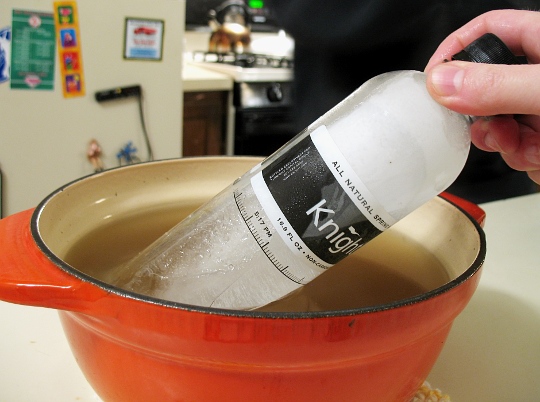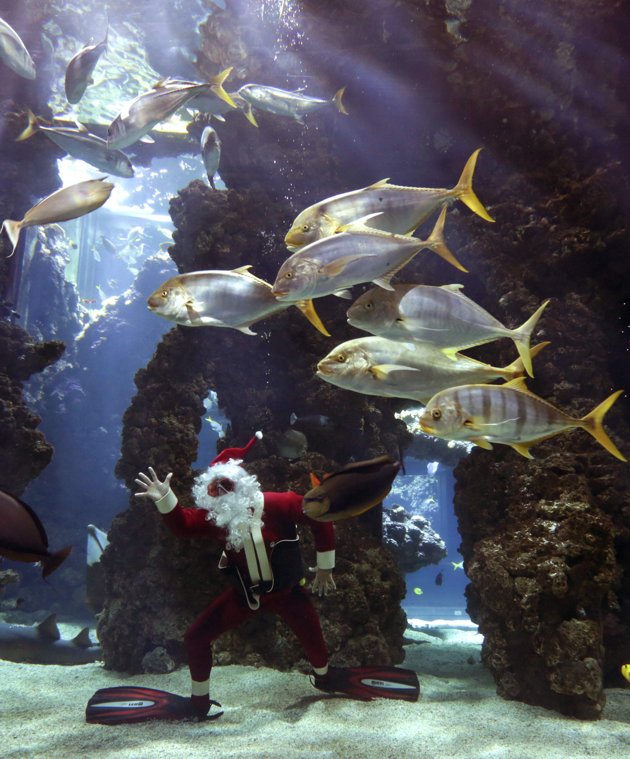Pretty Good Water Stories
by Hardly Waite

Gazette Senior Editor
Back in the olden days when the Pure Water Gazette was written with a typewriter and printed on paper, I had to look for water stories wherever I could find them. This usually meant going through magazines and newspapers and an occasional book. Articles about water were hard to find.
Now, with the help of automatic searches, the opposite is true. In fact, just by subscribing to a few key search items in Google Alerts I get more submissions every day than I can look at. Unfortunately, most of the random finds made by Google as it crawls the web looking for “water articles” or “water treatment” or “water news” are what you would expect of a robot. There are lots of finds like “large snake killed on road near Sapulpa water plant,” or “Minot council votes to postpone water rate hike.” Then there are slightly more interesting stories that get picked up and repeated and repeated like this month’s U Tube posting of a young man in Siberia throwing a pan of boiling water from an apartment building balcony to demonstrate that it turns to snow before it reaches the ground.
Here are, in brief, some pretty good stories—not the best or the worst—that I came across during this December of 2012.
Around 400 U.S. motorists die each year from drowning when their vehicle plunges into water. To help eliminate the chances of being restrained in a submerged car, a new seat belt mechanism has been designed to make sure that occupants can extract themselves quickly and safely when underwater.
Recruits at a South Texas military base were forced to fill their canteens from a toilet.
Gangs of thieves in Philadelphia perform daylight robberies by pretending to be water department employees.
According to Huffington Post, a new Brita-style pitcher filter named Soma (after “. . .a mystical drink to help warriors overcome their fears in battle or poets to find their inspiration. . .”) will come on the market soon if investors can be found. Its distinction is that it is recyclable, being made from “. . . Malaysian coconut shells, . . . vegan silk and . . . plant-based PLA composite.” A unique marketing plan includes a subscription service for cartridge replacements.
Harrison Enright was named boys water polo player of the year by Mercury News. Jamie Nolan was named girls water polo player of the year.
With a growing population and a drought that seems intent on hanging around, the most critical issue for Oklahoma City in 2013 may be securing access to an important source of drinking water. The city is involved in a water rights court battle with the Choctaw and Chicasaw tribes over water rights for a large area of southeastern Oklahoma.
A video was released in December of what is being called the largest iceberg calving event ever caught on tape.
![121222042824-04-india-protest-1222-horizontal-gallery[1]](http://purewatergazette.net/blog/wp-content/uploads/2012/12/121222042824-04-india-protest-1222-horizontal-gallery1.jpg)
Police in New Delhi blasted protesters with water cannon and tear gas as clashes broke out at a rally against rape, leaving scores of people drenched and angry.
about the New Delhi protests.
Residents of Orange Cove, CA were warmed against drinking tap water for an indefinite period because nitrate levels in the city’s water tested nearly double the EPA allowable. (An undersink reverse osmosis unit would easily take care of the nitrates.)
A genetically-modified salmon which grows twice as fast as ordinary fish could become the first genetically-modified animal in the world to be declared officially safe to eat. America’s powerful FDA ruled it posed no major health or environmental risks. The GM Atlantic salmon is engineered with extra genes from two other fish species. Read details in the Guardian.
Hollywood is getting a new water tower.
Tokyo Electric Power Co. is seeing a delay in starting operation of a new water treatment facility that can remove more radioactive substances than the one currently being used at the crippled Fukushima Daiichi nuclear power plant. The plant is an effort to deal with a massive amount of contaminated water created as a result of continuing water injection into the damaged reactors.
In HCM City, city authorities have mandated the use of new state-of-the-art waste water treatment systems at 324 medical stations. Medical authorities are complaining that the water treatment systems are not only extremely expensive but are largely unneeded. It is estimated that every waste water treatment system at medical stations costs 400-500 million dong.
At a “Water For Children” event staged for Greenpeace China, artists painted water treatment devices onto the bodies of children, as a metaphor for their bodies having to process water from polluted water sources in some areas of China.
Most water-saving showers save water by making the holes on the head smaller but this often means your shower doesn’t feel as cleansing, as you end up with a fine mist instead of a proper shower. A new shower head called Air-In-Shower aerates the water to make the water droplets larger. In layman’s terms, it fills the water droplets with air so that you’re not using as much water as a regular shower but the volume of the water shouldn’t feel lower. The manufacturer claims a 35% saving in water. The maker of the Air-in-Shower is Toto.
The Bureau of Land Management, in a very controversial decision, approved the plan for a 264 mile pipeline to carry billions of gallons of water to thirsty Las Vegas from rural counties along the Nevada-Utah line.
EPA administrator Lisa Jackson announced her resignation.
Bad Water Stories
We’ll end the year with a few examples of bad water stories. These are scraping the bottom of the water bucket.
A man in Converse, TX got a $12,000 water bill, but then the city changed it to $180.
A new product called Dream Water promises to help you sleep after flying. Ingredients: Melatonin, GABA, 5HTP and a few other things, in a 3-ounce serving. Price: $38.99 per six pack.
Justin Bieber tossed a bottle of water at Miami paparazzi.
According to the Collinsville News, a beautiful and well-behaved dog is thought to have recently been abandoned at the Collinsville Water Treatment Plant. Plant workers discovered the dog several days ago and the dog appears to have been well taken care of.
And finally, the absolute worst water story of the year:
You can cool hot soup quickly by stirring it with a frozen plastic water bottle.

The Gazette’s Pick for Worst Water Story of the Year. If the three bears had known this trick, there would have been no story.






![121222042824-04-india-protest-1222-horizontal-gallery[1]](http://purewatergazette.net/blog/wp-content/uploads/2012/12/121222042824-04-india-protest-1222-horizontal-gallery1.jpg)

![Santa_Monica_Aerial_355x280[1]](http://purewatergazette.net/blog/wp-content/uploads/2012/12/Santa_Monica_Aerial_355x2801.jpg)
![23Dec[1]](http://purewatergazette.net/blog/wp-content/uploads/2012/12/23Dec1.jpg)

